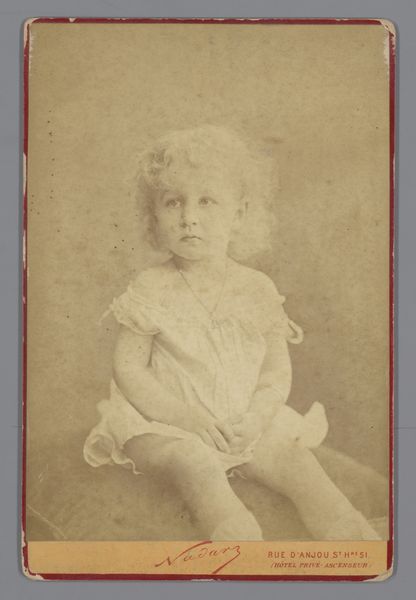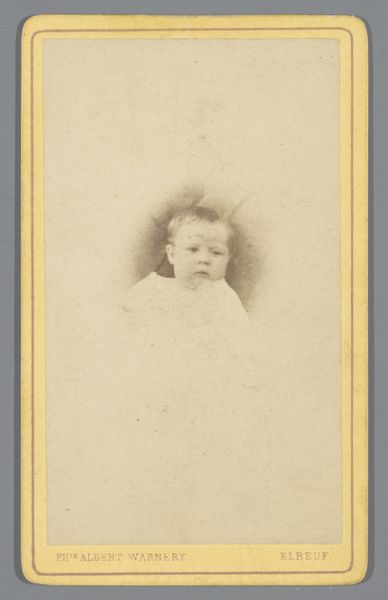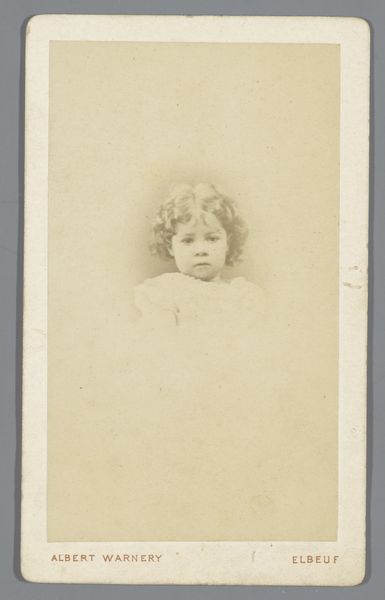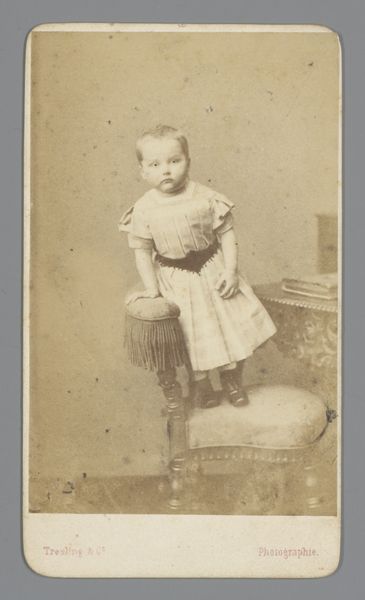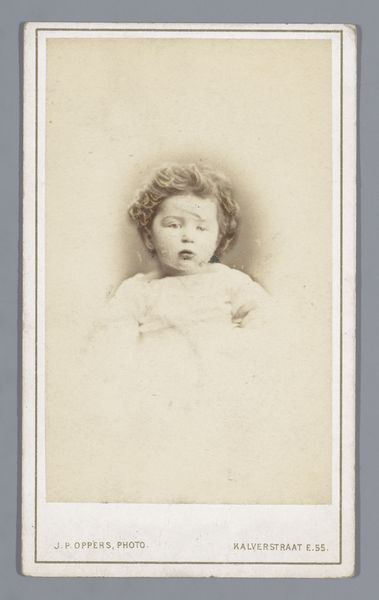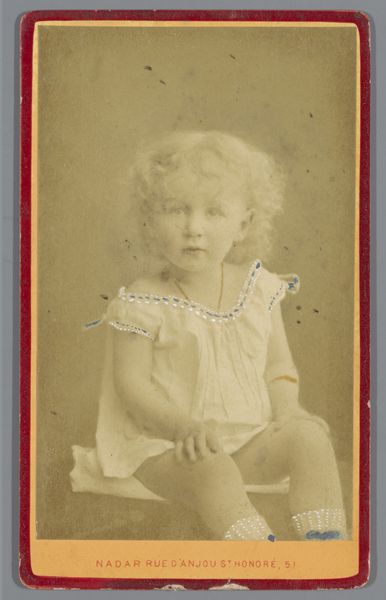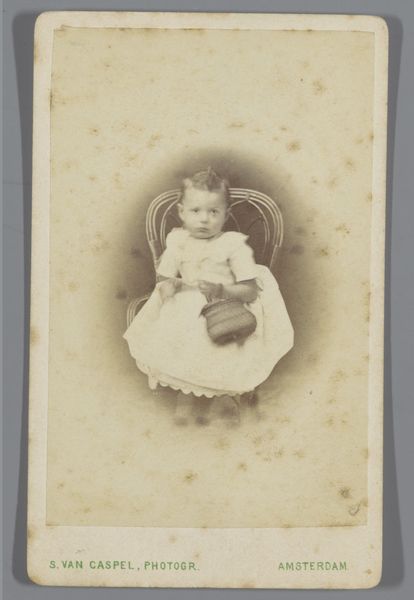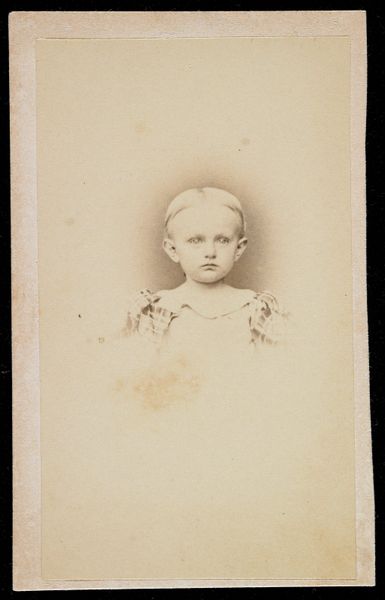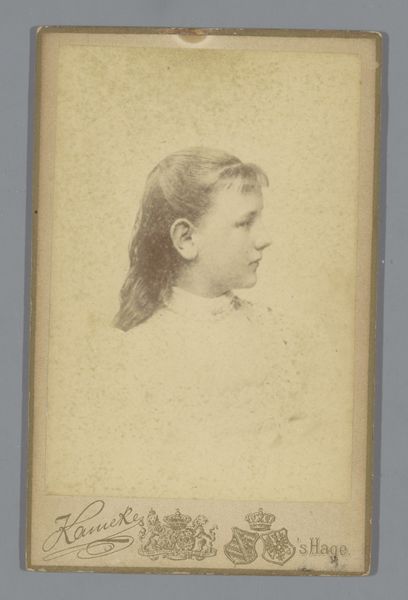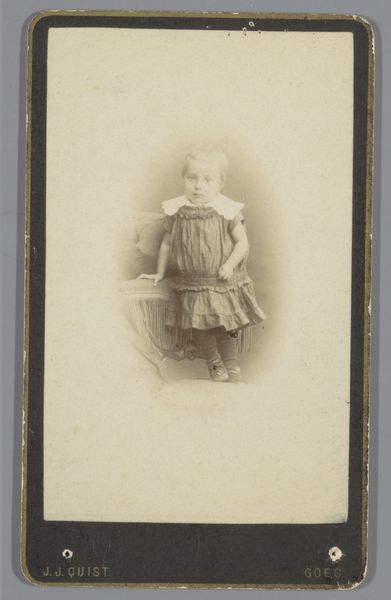
photography, gelatin-silver-print
#
photography
#
gelatin-silver-print
#
19th century
Dimensions: height 166 mm, width 106 mm
Copyright: Rijks Museum: Open Domain
Curator: What a compelling image. This gelatin silver print, “Portret van een onbekend meisje,” was taken by Bernardus Bruining, likely sometime between 1880 and 1890. Editor: It’s strangely ethereal, isn't it? The focus is soft, almost dreamlike. There's a vulnerability to her gaze that immediately pulls you in, though the overall impression is sepia tinged and old-fashioned. Curator: I find the very anonymity fascinating, the “unknown girl.” Photographic portraits at this time became newly accessible to a rising middle class, beyond the elite. They speak volumes about aspiration. Editor: It's true, but think about the societal constraints on young girls then. Was she participating in her self-representation or simply an object to be framed and consumed? Curator: That’s a vital point. This studio portrait is certainly mediated. But within those limits, might we consider her agency? Note the pearl necklace, perhaps a marker of familial wealth or a performative gesture of class identity? Editor: Perhaps. Or maybe the pearls were selected for her, another signifier chosen to construct the image. To analyze this portrait we need to unpack not just her visual representation but the entire culture of portraiture, who had access, how poses were chosen. The photographer, the location of the studio, it all signifies social status and artistic choices that impact how she’s read. Curator: Precisely! The commercial element is also essential. Bruining was a professional photographer in Arnhem; these photographs functioned as commodities in a rapidly developing visual culture. Families paid to memorialize themselves in specific ways. The softness of focus you observed may have been, itself, a fashionable aesthetic, linked to notions of grace or delicacy that were highly prized for young girls at that time. Editor: The questions this image raises extend far beyond the aesthetic then; what she wears, how she looks, these are reflections of complex negotiations that reflect social structures and power dynamics. The act of creating and possessing her photograph shaped her existence in subtle but concrete ways. Curator: Yes, the way this object has become historicized, landing here in the Rijksmuseum and prompting us to look anew at identity, agency, and the performance of the self, it makes me think we owe this unknown girl so much. Editor: Agreed, and that lingering ambiguity of a name long forgotten offers a potent reminder of the power imbalances, but also of how resilient some faces, and the stories they represent, can be.
Comments
No comments
Be the first to comment and join the conversation on the ultimate creative platform.
